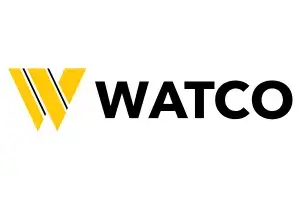
Watco Moves from Paper to Centralized, Multi-Site Maintenance Data
Customer Since: 2018 | Industry: Transportation
BACKGROUND
Watco is an international transportation and logistics services company that owns and operates a network of short line railroads, terminals, ports, and repair terminals throughout North America and Australia. For the past several years, Watco has been focused on improving their maintenance processes and reducing their capital expenses.
To help them achieve their goals, the team started by testing eMaint’s capabilities at just a few locations. However, they quickly realized the untapped potential and scaled adoption of eMaint throughout their organization.
Today, Watco uses eMaint to collect and centralize maintenance and compliance data, streamline their processes, and much more.
CHALLENGES
One of Watco’s biggest challenges was the complexity of their operations. For one, Watco owns thousands of assets—including locomotives, rail cars, and other heavy equipment—across nearly 200 locations.
Just one of Watco’s terminals has more than 1,600 assets. And each location has its own critical assets, which differ site to site. A forklift might be a critical asset for one site, while for another it could be a million-dollar crane. Additionally, Watco employs numerous internal teams, each focused on different elements of the transportation system.
Because of their complexity, reporting was also a major challenge, especially when trying to manage everything the old-fashioned way. For example, Watco had been using paper documentation to record engine hours and odometer readings. Team members would turn in these paper reports at bins around the site, where they would be collected manually. This process was not only time-consuming, but also prone to error.
“We had hours and odometer readings being entered incorrectly due to handwriting or readings being read incorrectly,” said Amanda Shanholtzer, Systems Analyst at Watco. “We were having to correct meter readings and make adjustments to the preventive work orders and schedules. Integrating with Teletrac through API has resolved a lot of these issues.”
The team was already using Teletrac fleet sensors for things like GPS tracking, inspections, and electronic logs, but they needed a centralized system to track, manage, and act on this data.
IMPLEMENTATION
When the team implemented eMaint, they took a step back to understand the bottlenecks in their processes. From there, they were able to leverage eMaint to automate many of their most time-consuming and tedious tasks.
For example, with eMaint, Watco was able to automate their documentation processes and provide more data transparency—both for compliance purposes and for visibility throughout the organization. The team also worked with eMaint’s support team to build custom tables and data fields to give them even more visibility into their operations.
Once they had a few use cases under their belt, the Watco team gained buy-in from leadership, demonstrated the value they were getting from the system, and worked to scale the implementation across other areas of the organization. By proving the success and value of the system at a few locations to start, they were able to get other parts of the business excited to use eMaint as well.
In addition to eMaint’s flexibility and robust capabilities, the team was further excited to learn that—thanks to eMaint API integrations—the computerized maintenance management system (CMMS) software worked seamlessly with their existing tools and systems, like their Teletrac sensors.
“The integration of pulling daily equipment hours into eMaint was surprisingly smooth and a quick win for our team,” says Watco’s Director of Asset Management, Derek Prestholt. These integrations allowed Watco to get more value out of their existing tools. For example, the team has started pushing inspection data from Teletrac sensors into eMaint to automatically create work order requests when an inspection failed.
RESULTS
With eMaint, critical alerts and information are now centralized in one system, and Watco’s teams now know exactly what needs to be done and when—like when an oil sample needs to be pulled or when an inspection needs to be done. From there, eMaint can automatically generate the necessary work orders to help the team stay on track with preventive maintenance—and save on costly emergency repairs.
Plus, when technicians are performing work, they now have all the information they need at their fingertips. They can pull up asset records and check the documentation at any time to more easily diagnose problems that come up. As a result, eMaint is helping Watco stay on top of asset maintenance, while saving time and costs.
OUTLOOK
Using eMaint, Watco has saved a significant amount of time and improved their processes in multiple areas—from ensuring compliance and streamlining reporting to automating preventive maintenance tasks and getting ahead of potential issues.
eMaint is quickly becoming the go-to place for teams to find the information they need. “We use eMaint as the centralized database for all of our assets and asset detail,” says Prestholt.
“We were having to correct meter readings and make adjustments to the preventive work orders and schedules. Integrating with Teletrac through API has resolved a lot of these issues.“
– Amanda Shanholtzer, Systems Analyst at Watco
